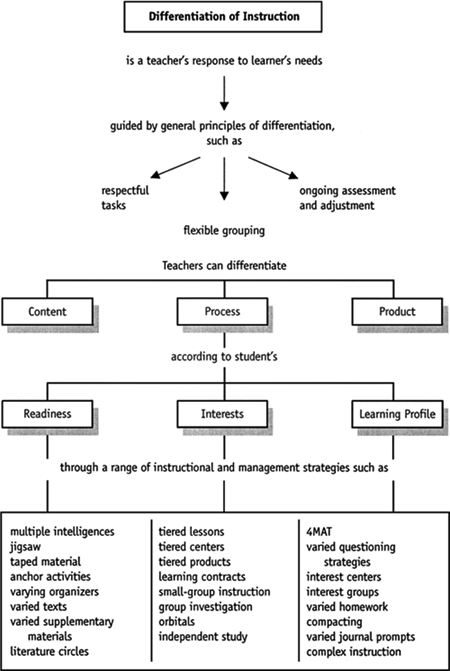SUPPORTING LEARNERS//SUPPORTING LEARNING DIFFERENCES
Two important pedagogical theories are universal design for learning (UDL) and differentiated instruction (DI).
UDL proactively makes learning accessible to all. It involves thinking about all the possible learners we may have, with an emphasis on physical and structural accessibility. Lessons have the following four components: Engagement, representation, action and expression, and assessments. Multiple means of each component are necessary.
DI reactively addresses differences that pertain to our students. It is important to get to know students first. So while the same strategies are used as in UDL, the strategies are now refined. Lessons and units consist of three components: content, process, and product. We should differentiate each component based on student readiness, interests, and learning preferences.
Together, UDI and DI help us support our students' learning differences in a holistic manner. Both emphasize equitable strategies that promote student agency and teacher autonomy.
Below are resources for UDL and DI teaching practices.
Recommended readings to purchase:
-
Rapp, W. H. (2014). Universal design for learning in action: 100 ways to teach all learners.
-
Fisher, D., Frey, N., & Hattie, J. (2020). The distance learning playbook grades K-12.
Resources:
-
7 Styles of learning
-
Learning and thinking differences understood
-
Learning preferences survey templates: Lower levels, upper levels
-
UDL guidelines graphic organizer
-
UDL exchange: UDL lesson plans created by teachers
-
UDL in action: 1st-grade math, 5th-grade, HS chemistry
-
Kiernan et al. (2018) Connecting UDL to CRT
-
Proactive & reactive lesson plan (Kindergarten)
-
Glass (2009) DI and strategies
-
Valiendes et al (2018) Blending IE with DI
-
Fisher et al. (2020) Resources-Module 3
-
DI graphic organizer
-
Rapp (2014) Instructional strategies (the book has many more!)
-
Strategies for engagement
-
Through classroom management: Create authentic classroom jobs
-
Through social interaction: Board and card games
-
Through executive functions: Cue signals (external reminders) for student self-regulation
-
-
Strategies for input
-
Through space: Allow food, drinks, and gum!
-
Through materials: Self-amplifiers for self-talk
-
Through classroom management: 10:2 Theory (Every 10 min. allow for 2 min. of processing time)
-
-
Strategies for output
-
Through space: Student-created bulletin boards
-
Through content instruction: Drawing
-
Through executive functions: Templates
-
-
Strategies for assessment
-
Through testing: Adapted tests
-
Through homework: Family projects
-
Through self-evaluation: Learning logs
-
-
-
Self-regulated strategy development (SRSD)
-
Understood: Through your child's eyes
-
Categories of disability under IDEA
-
Padlet: Historical Timeline of Special Education
-
Research-based practices for teaching students with disabilities
-
Remote teaching tips for students with disabilities
-
How to support scholars with dyslexia
-
Teach that dyslexia is a gift while keeping in mind that not all individuals with dyslexia may see dyslexia in that way.
-
Watch the informative documentary Journey into Dyslexia
-

